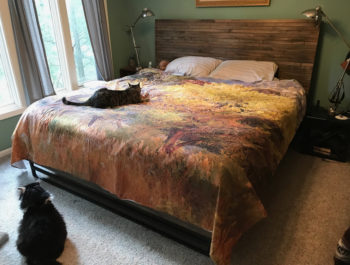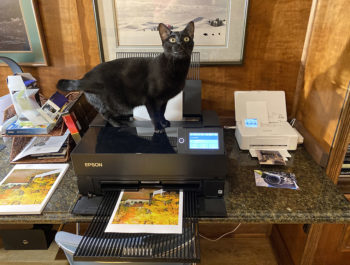How to Get Big Impact from Smaller Prints
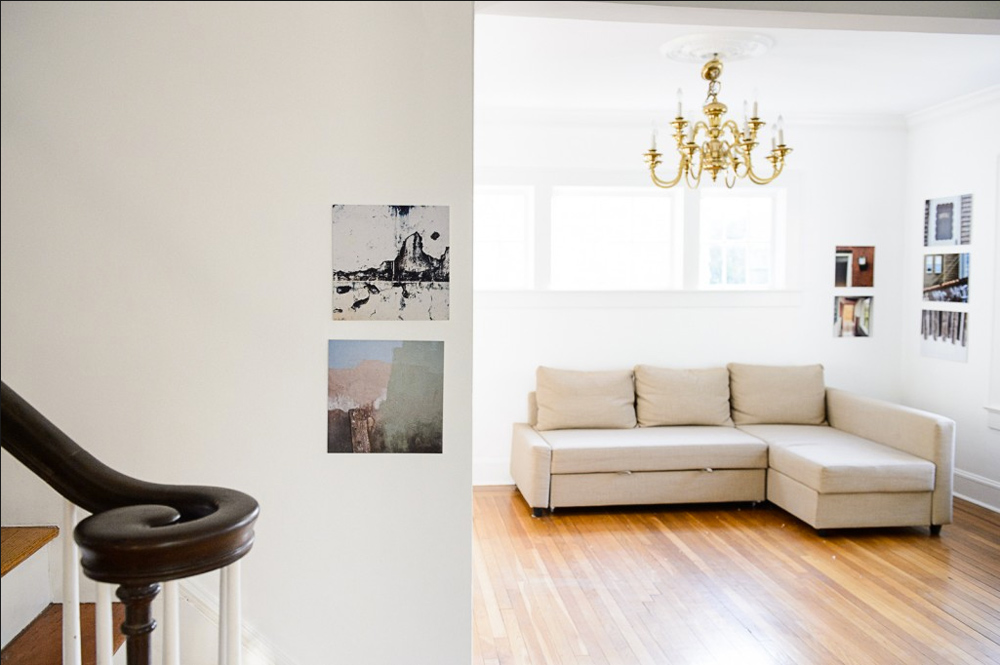
Photographers preparing to show their work are often tempted to make large prints. While that can be a great approach, especially with today’s relatively low printing prices, there are also plenty of situations where 11 x 14, 8 x 10, or even smaller prints can be a better choice for creating maximum impact in a specific setting or for a particular body of work.
By giving consideration to the setting you have to work with, and the story you want to tell with your photographs, you can spot situations where “small is beautiful,” and reap a number of aesthetic, logistical, and economic benefits.
Whether in a gallery, home, or other venues, physical displays can be a refreshing and engaging break from web pages and iPads, especially as we move beyond the Covid-19 pandemic and reconnect with social situations. But because each space is different, it’s essential to consider what you have to work with, including opportunities and limitations.
Smaller galleries and typical homes, for example, don’t have the expansive square footage of a museum. As a result, attendees will often be viewing your photos from relatively short distances, which can be awkward with, say, a 32 x 40 print. It’s difficult to take in and appreciate a work of that size without some distance.
Moreover, particularly in residential or business settings, you’ll often encounter a shortage of uninterrupted wall space due to doors, windows, shelves, radiators, switches, etc. Smaller prints, either singly or in groups, can often be a better fit for these types of situations.
Of course, the whole point of showing your work is to reveal something previously unseen, and to spark a response, inspire, inform, or otherwise connect with your audience. To that end, it’s wise to apply the principles of storytelling in a visual medium. In general, people respond well to coherent sequence and flow, with a beginning, middle, and end. You can use image placement and composition to invite comparisons and highlight contrasts and allow your story to unfold in ways that are profound, playful, or provocative.
Take, for example, the elegantly minimal home display seen in figure 1. Photographer Ananda Lima’s small color prints take on a jewel-like quality when presented without frame or mat against the neutral white walls. Ample space around them focuses the eye quite effectively.
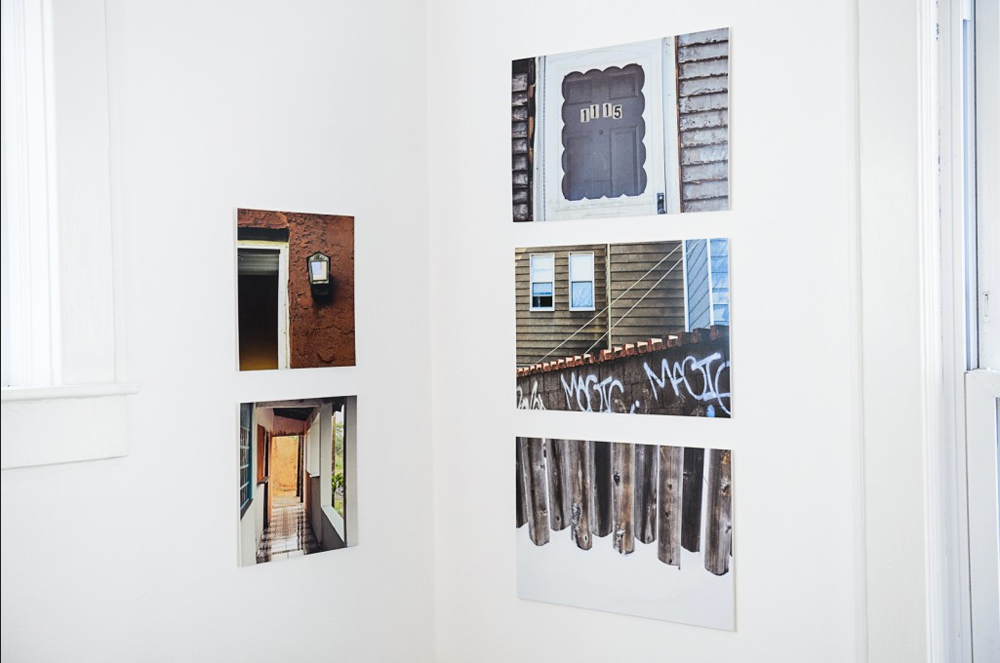
Figure 2 is a closer look at the corner grouping seen in Figure 1. It makes a virtue out of a tight space by putting five images in close proximity, and the imagery of doors, windows, corridors, and fences harmonizes into a meditation on space and dimension, barriers, and openings. The asymmetrical arrangement creates a strong vertical line in the right-hand column, while the square prints at left offer a sense of balance without appearing overly static. The five photos have become a single unified work that invites the viewer to look, linger, and consider.

Many photographers will engage with a particular subject or theme, either for a short intense period or over a longer-term. Clusters of smaller prints can be an ideal way to present connected works, as seen in Figure 3. The four close-ups are of oyster shells; they literally bring to light remarkable colors and textures that would otherwise go unseen. The smaller-format prints and wide mats create a sense of quiet intimacy that draws the viewer in.
The group of oyster photos was shown at an open studio event, in a location with active foot traffic. It proved to be effective at catching the eye of passers-by and serving as an introduction to the photographer’s work. The accompanying wall signage aided this process.
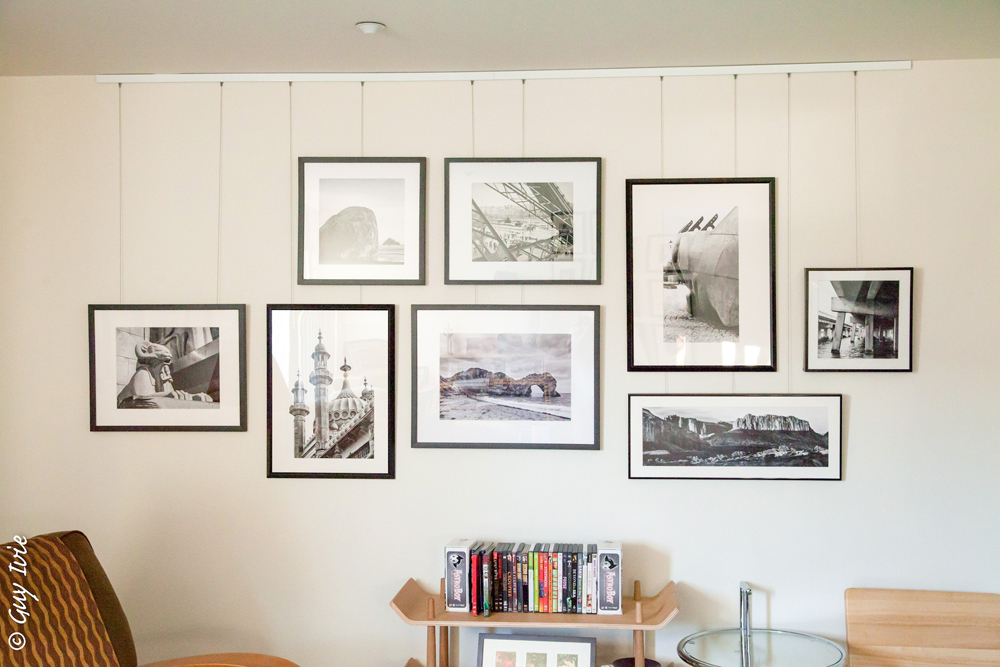
Another effective display is the gallery wall of eight modest-size prints by Guy Ivie in Figure 4, which again creates a sense of a single unified whole. Note the composition: the striking image of a seaside rock formation anchors the center of the bottom row, while the supporting photos of other far-flung sights (both natural and manmade) draw the eye sequentially. Combining different formats, including landscape, portrait, square, and panorama, requires attention to composition, but results in a dynamically balanced feel. Ivie’s use of a Gallery System art hanging system simplified the arrangement and adjustment process and makes later modifications easier.
Obviously, some photographers’ works come across most effectively in larger formats, and if you’re fortunate enough to have a big exhibition space with open walls, you might want to take advantage of the fact that big prints are more affordable than ever before. But don’t neglect the fact that smaller prints, in addition to being less expensive and easier to place, can open up new creative options and achieve things that larger images can’t.
Publishers Note: I have been using products from Gallery System Art Displays for a number of years. We use the system at the studio and it allows us to change out and reposition framed photographs very quickly and easily. Also, you should check out their lighting systems. Lights will be the next investment for my gallery/studio.
Peter Dunn
June 2020
,
Peter Dunn is the marketing director for Gallery System Art Displays (www.GallerySystem.com), a supplier of art hanging systems to galleries and other venues. The son and husband of artists, his display experience includes residential and professional settings.






